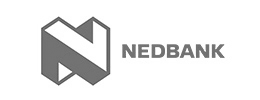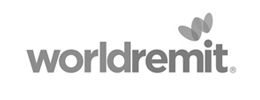Business analytics joins forces with reconciliation solutions for efficient decision making
A special ReconArt feature first published on Bobsguide – the ultimate fintech resource, an innovative online platform that connects the providers of fintech solutions with the financial services professionals who need them.
Read the article here as well.
The rush for data insights follows the Olympic motto – swifter, higher, stronger.
Admittedly, information is the most valuable commodity in times of fast and dynamic changes so it is being gathered meticulously, bought and sold, stored and exchanged, processed and consumed. In the corporate world this perception has nurtured the big data and analytics revolution. But unlike any other commodity, data abundance does not necessarily translate into solid business strategy straight away. Decision making based on actual data takes place only given the relevant data input, integration of various company data sources and the appropriate processing and analytical tools are at place.
Traditionally, Excel has been used to cater for both data visualisation and the reporting needs of financial teams and management. It used to work (and still does) when the data sources were just a handful and the reporting needs were simple. But times have changed and companies face challenges of different proportions – they are now overwhelmed with data that they also need to monitor in dynamics.
The absence of a single source of truth adds another complication. Financial, legal and compliance, marketing, sales, production records, and other crucial business data resides in separated systems. Each department takes care of its own domain and produces reporting output on demand. The management struggles to gather the full picture based on actual data, let alone to pick up more subtle developments, which often results in critical blind spots for the decision makers.
Moreover, business data models often rely on a series of static snapshots that disclose a current status but fall short of exposing important trends in development. Conclusions are still based on past period extrapolations and arbitrary projections, instead of interpreting actual up-to-date data. For example, cash flow forecasts take into consideration sales data, but some recurring deviations may follow a pattern related to post-sale incidents such as payment errors, fees & interest rates incurred, penalties and discount miscalculations. Those might be one time accidents with a deep impact or repetitive instances. They might be a product of oversight, malign activity, negligence, or missed opportunity. Taken alone, each of those examples might not affect the quarterly results. But as the effects accumulate, their timely and prudent management makes the difference between the average and the brilliant.
An unexpected solution for the analytical needs of the company is the company reconciliation platform. It integrates different data sources and correlates data residing in different system for reconciliation purposes. This data holds a great analytical value add.
Reconciliation captures a wealth of business relevant data flowing daily. Cloud-based reconciliation solutions store transaction data from various sources – ERP or general ledger, sales systems, payment processors and other industry specific systems. You could say, transaction data is the blood and veins of the communication with the outside world as it traces the relationships and the exchange between any given business and its essential counterparts – clients, suppliers, regulatory bodies, governments, banks. It is a detailed account of the company’s actions and their results in near real time.
A reconciliation tool is also the place to normalize and enrich the transactional data from various file formats, not only for the purpose of the matching and reconciliation itself, but also for the control, reporting and analysis needs. Tapping data from an automated reconciliation platform marks a leap towards the resolution of a long standing, complex and time consuming challenge – consolidating data sourced from a multitude of disparate business systems. This consolidation is an integral step of the reconciliation process but can also be incorporated in the business analytics of the company without any additional modifications needed.
Having said that, it is perplexing how underestimated the analytics potential of transaction data flowing in and out of a modern automated data reconciliation system can be. Reconciliation itself, widely perceived as a seemingly mundane accounting routine, has been recognised as a control process primarily. But all businesses, particularly the ones dealing with processing large transactional volumes, should revisit the role of reconciled data in their data models and underpin C level management decision making.
Reconciliation is not isolated in the realm of financial accounting and it can build organic correlations with other essential business operations such as supplier management, customer retention policies, partnership development efforts, planning and budgeting cycles, etc. Data from the reconciliation systems can be retrieved with various levels of granularity and can be employed for precise cross-sections. Its unexplored potential should be adequately harnessed in business process analytics.
Reconciliation data in a specific industry context can provide an in-depth overview of critical business operations and highlight vulnerabilities or spot opportunities. Business strategy adjustments to navigate uncertainties and threats are substantiated by dynamically updated and consolidated actual data. Here are just few basic examples. All of those instances encourage cash flows optimisation, mitigate risks, and generate savings.
- Bank branches can pull ATM reconciliation data and construct a heat map of cash drawing activity for efficient logistics and expense planning or optimising the ATM network based on real ATM usage.
- AR reconciliation process data can be assist cash-flow optimisation based on aging, commissions paid for payments processed or currency conversions and ABC analysis of customers based on their spend.
- Retailers & e-commerce merchants can keep an eye on customer preferences for payment channels and negotiate more favorable terms with payment processors regarding fees, volume discounts, currencies, methods of payment, or settlement timeframes.
- In turn, payment service providers can keep track on FX exchange rates and volumes to counter currency risk, or, alternatively, to monitor delays / bottlenecks and manage effectively their partner network.
- Bank reconciliation data can hint for consolidation of corporate bank accounts.
- Etc.
From technical perspective, utilising reconciliation systems data is straightforward and involves tools that already exist in most companies so no heavy infrastructure or capital investments are required. Modern reconciliation systems, through their built-in ETL functionalities, enrich and normalise the records. That output advances the transition from unstructured data to structured data. Upon the transfer into a data warehouse it becomes readily available to be extracted and displayed in management dashboards. Thus a unified repository of normalised business critical data is created – updated in close to real time, auditable, IT security compliant. It serves the construction of accurate metrics and KPIs with a wide application within the business organisations. In combination with the rich visualisation capabilities of third party software such as Microsoft Power BI, Tableau, IBM Cognos, Sisense, Qlikview, etc, it forms the backbone of the business analytics setup.
Thanks to the new technology solutions for process automation, reconciliation has made a remarkable comeback as an integral part of the business decision making framework proving its robust capacity to reveal valuable analytical insights.

 follow our blog
follow our blog






















 Quick response
Quick response

